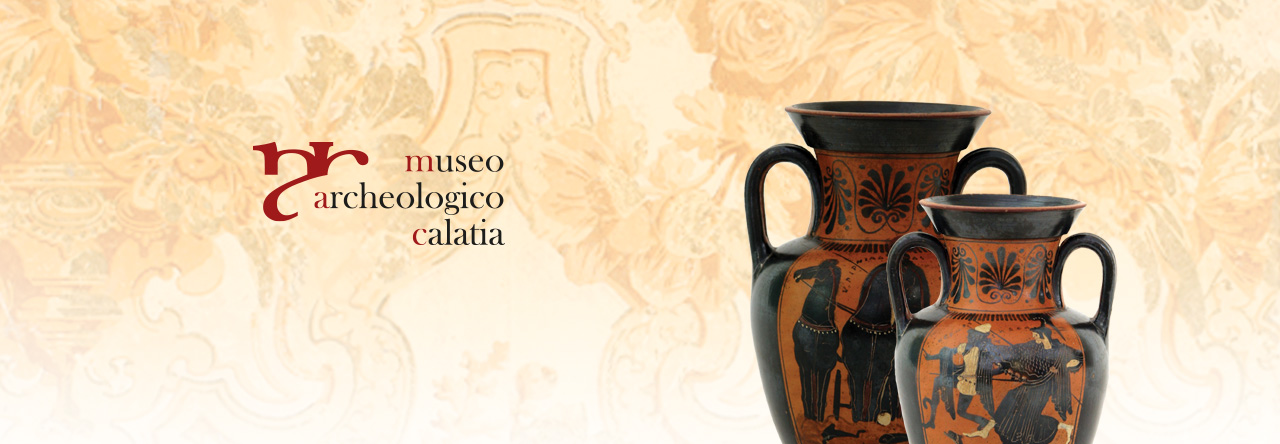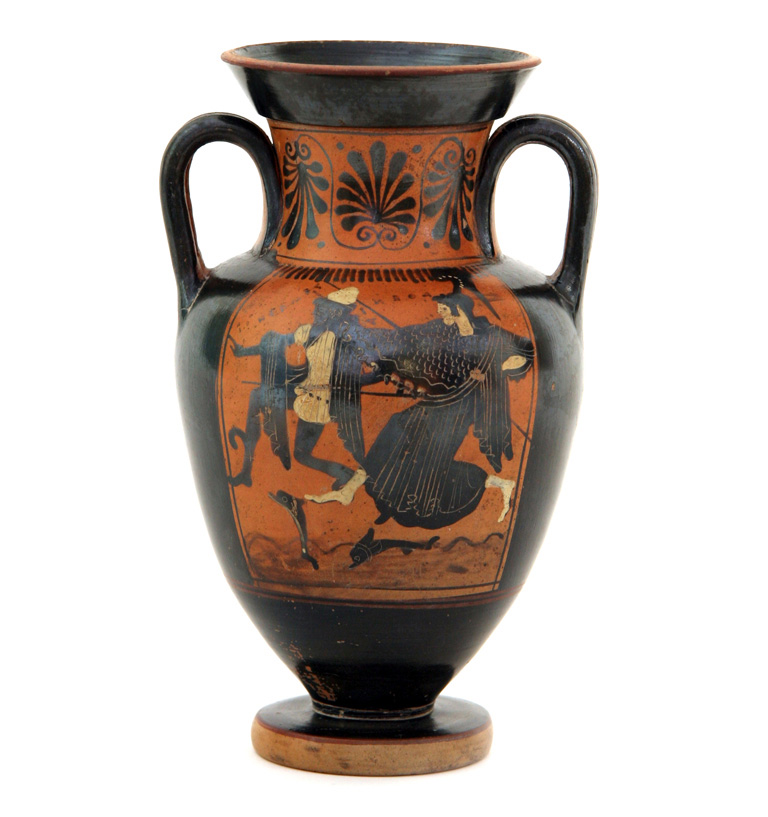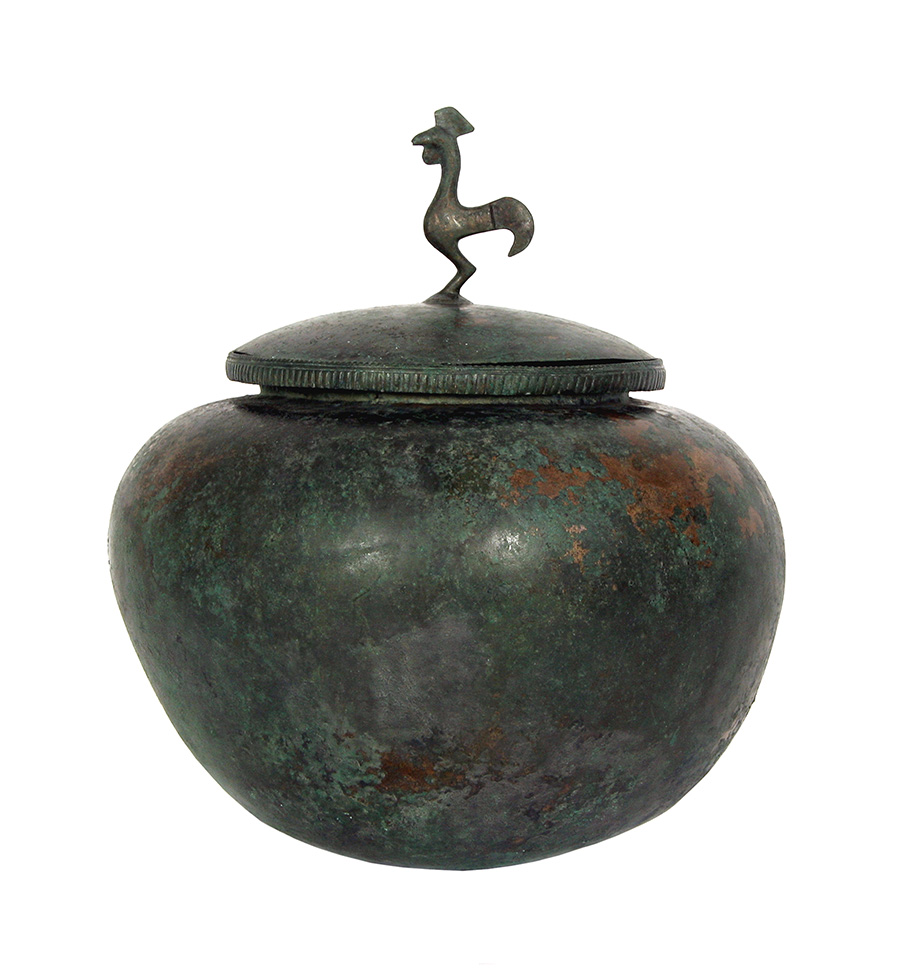In this phase aristocracies in Calatia are in contact with the western colonies of Greece through the city of Capua. They borrow from them customs and habits concerning funerary objects and rites. Between the VI and the early V century BC, the funerary objects consist mainly of Attic vases, whose basic forms recall the symposium – cups, amphorae, and/or oinochoe, mastos. Examples are black-figure vases from Campania, as shown by the funerary objects in the old wooden showcases.
A distinctive element is the cremation rite, borrowed from the Greek world. As for graves belonging to adults, the cinerary is made up of two bronze indinos, whose specimens are in the middle of the room.
They are vases intended for symposium and wine consumption, which could be used as prizes in competitions and challenges. Late Archaic deinoi are one of the most typical productions in the Etruscan city of Capua.
The funerary objects of this period are exhibited in the big room with walls decorated with yellow floral motifs and gold. This room reflects the layout of the building during the first half of the 19th century, when it was turned into a residential building once come into possession of the Columbrano branch of the House of Carafa. On the balconies there are curtains made with tissues from San Leucio that perpetuates the tradition of the royal silk factories, as desired by Ferdinand IV of Naples.
Continue the visit in the Section Women in the Orientalising Period


 Italiano
Italiano Français
Français Español
Español Deutsch
Deutsch





